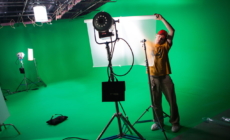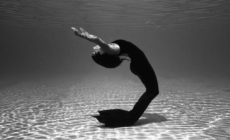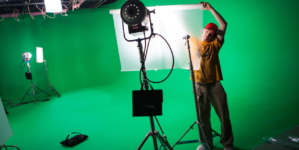-
Cool Picture Effects - September 4, 2018
-
Portrait Photography Tips That’ll Add a WOW Factor to Your Photos - September 3, 2018
-
Photography Tips for Taking Awesome Pics on Your Digital Camera - September 2, 2018
-
Fashion Photographer Salary - September 1, 2018
-
How to Set Up a Quick DIY Photo Booth in No Time - August 31, 2018
-
Do Not Miss These Tips for Shooting Stunning Black and White Photos - August 30, 2018
-
Epic Senior Picture Ideas That’ll Help You Cherish Your Memories - August 29, 2018
-
Incredibly Creative Poses for Family Photos - August 28, 2018
-
Get the Perfect Snap of Your Newborn With These Photography Ideas - August 27, 2018
-
Newborn Photography Poses That Capture the Special Moment Perfectly - August 26, 2018
A Layman’s Guide to Basic Elements Essential to Photography
A photograph is not always a representation of what is seen, in fact, it often conveys many thoughts or ideas that are far apart from reality. The argument ‘can a photograph speak much more than words?’ remains till today. Well, this is surely an issue which also completely depends on the photograph.
Photography is not just about having the right equipment or studying the most advanced courses. A good photographer requires skill and keen powers of observation to be able to capture the best frame. Today, photography has surely advanced to higher proportions. It is no longer just a hobby, this is one of the most sought-after professions in recent times. To be a successful photographer requires practice, observation, the right equipment, and a little bit of ‘lady luck’ at times! If you have a keen interest in photography, then take a look at these techniques and tips that will act as your basic guide in the world of photography.
Basic Guidelines about Photography
The popularity of digital photography has led to newer inventions and improvements of the digital camera. The developments of these models have led to more and more people being introduced to this artistic medium. Often, digital cameras are the most in demand when it comes to the average traveler. But many photographers still prefer to use SLR cameras and choose the old-fashioned way to capture frames on film. The excitement of the photograph coming to life in a darkroom cannot be compared to the modern medium. This beginners guide to photography mentions some important points in relation to technical aspects as well as those from an artistic point of view.
Aperture Settings
Knowing accurate aperture settings is possible only with practice. This is particularly when photographers prefer to opt for the manual mode. A small aperture setting simply means more light can pass through the lens. A higher aperture setting means quite the opposite, less light can pass through the lens. Aperture settings are very important to control the actual lighting of a photograph. This always goes hand-in-hand with the shutter speed of a camera.
Shutter Speed
On manual cameras, shutter speeds are set in a dial on the top frame. By adjusting the shutter speed, one can control the time for which the shutter remains open when a photographer clicks a picture. Fast shutter speeds do not give the problem of ‘camera shake’. However, in low light, a photographer may need to open the aperture more and keep the shutter on a low speed. This is when there are more chances of a ‘camera shake’ due to low light. To get rid of this problem, photographers use the tripod stand for better photographs in the night hours.
Film Speed
Every film available has a speed rating. This is indicated in terms of ISO or ASA. This term is always affixed with the speed of the film, for example, 100 ISO/ASA or 400 ISO/ASA. The higher the number of the film, the lesser the amount of light required for a photograph. Therefore, films with a higher ISO/ASA can be used for low light situations. Films with a low number are meant for daylight. This is because the film is relatively low in terms of sensitivity.
Understand Light and Color
A good photographer should be able to understand the effect of light for a photograph. A person with good powers of observation will be able to understand the required amount of light needed for a stunning photograph. When there is too much light, the ultimate result will be a washed-out effect. When there is very little light, the photograph may appear unclear without the required amount of exposure. Observe and study works of famous photographers to understand the importance of light and the subsequent effect it has on colors.
Focus on Composition
Look at the subject in various angles. Try to think differently. Often, a beginner to photography tries to capture a scene without thinking about the different possibilities. If you are attempting nature photography, for example, try to look at the center focus from different points of view. This will help to hone the skills of looking at objects from various angles, and develop the ability to click the best possible composition.
As a photographer, you can study and observe the various genres of photography to be able to understand the kind of subject you are basically comfortable with. Practice and creativity will help you to sharpen your skills and turn yourself into a complete professional. Always allow your creativity to flow. The results will show for sure. Best of luck!
































4 Comments on this Post
WD SmartWare Pro Download and Installation video tutorial
I was looking at some of your articles on this site and I believe this internet site is really instructive! Keep on posting .
borderlands 2 community patch 4.0 fr
Fantastic items from you, man. I have consider your stuff previous to and you are simply extremely magnificent. I really like what you have obtained here, really like what you’re stating and the way in which you say it. You make it entertaining and you still care for to keep it wise. I cant wait to learn far more from you. This is really a great website.
multihack
Thanks for another wonderful post. Where else could anybody get that kind of information in such a perfect way of writing? I have a presentation next week, and I am on the look for such information.
prezi 6.26
You got yourself a new rader.